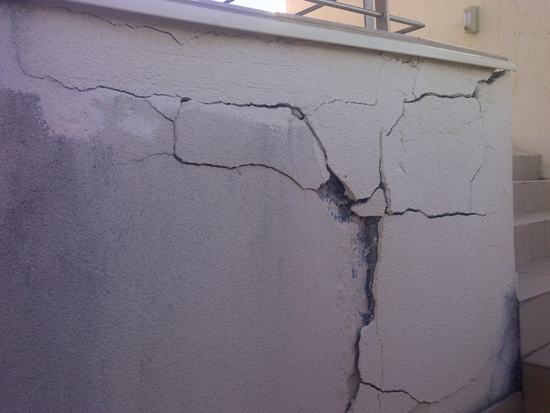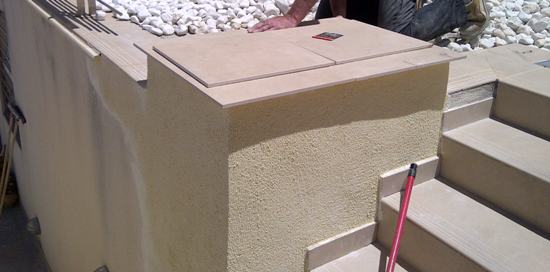Something fishy
Sometimes our single-layer product, as with those of any other manufacturer, may be responsible for a certain pathology. It doesn’t happen often, but it can happen. As we mentioned in our previous entry, some topics make us jump to attention while others take the insistence of our colleagues from the sales force to get us moving. We understand that. Customers have to be attended to, even though all the evidence points anywhere other than to the single-layer product as being to blame for the mess.
This time it was a photograph. This one.

With cracks like that we could have put paid to the matter with a brief report pointing towards the possible discovery worthy of a winner of a Nobel prize for physics if it could be shown that those cracks corresponded to a 10-milimetre layer whose only function is to render and protect a wall from weathering effects. But the spectacular nature of the image piqued our interest, because there was something “fishy” going on behind that single-layer for sure.
The conversation on site quickly become about lending a hand rather than laying blame. All those present applied our common sense and opted to completely demolish the brickwork onto which our Argorev Alabaster Scrape had been applied. What we found was a hollow double brick partition adjoining the concrete wall that we’d suspected would be there. The serious deterioration of that partition indicated the systematic presence of damp, but where was it coming from?
The next day we received this other photograph. That “something fishy” been discovered.

Unbelievable though it may seem, after spending a small fortune on the basement wall, they’d built a screed with double hollow brick to complete a stairway alignment. Without a second thought the builders had left the natural earth fixed only by a double-hollow-brick partition, finished with a concrete floor to bury the “murder” weapon. The earth was completely sodden because of a nearby drain, so we knew that we had found the culprit. The pressure of the water, whether in liquid or vapour form, with the high temperatures fully explained why the situation had occurred.

Once the area had been cleaned off, the customer decided to build a plant pot with half-foot perforated brick, waterproofed on the inside with Argotec Impermeable 300. The solution was completed with a joint between the brickwork and the concrete wall, applying a bridging Joint onto the wall and perforated brick and finishing by re-applying our single-layer mortar Argorev Alabaster Scraping. The drain was obviously repaired as well. Finally, an equaliser was used to match the tone of the two mortar layers, which had been applied five years apart.

A single-layer mortar might shrink, it might crack because of excessive water loss, it might become discoloured, and it might even present clear symptoms of too much or too little adherence or projectability, but it’s hardly going to “explode” as in that first photo. To find the reason for a given pathology it’s all too easy to point the finger at the manufacturer of any product, but that doesn’t necessarily mean you’ve got the real culprit.
(C) 2025 Argos Derivados del Cemento. Todos los derechos reservados









